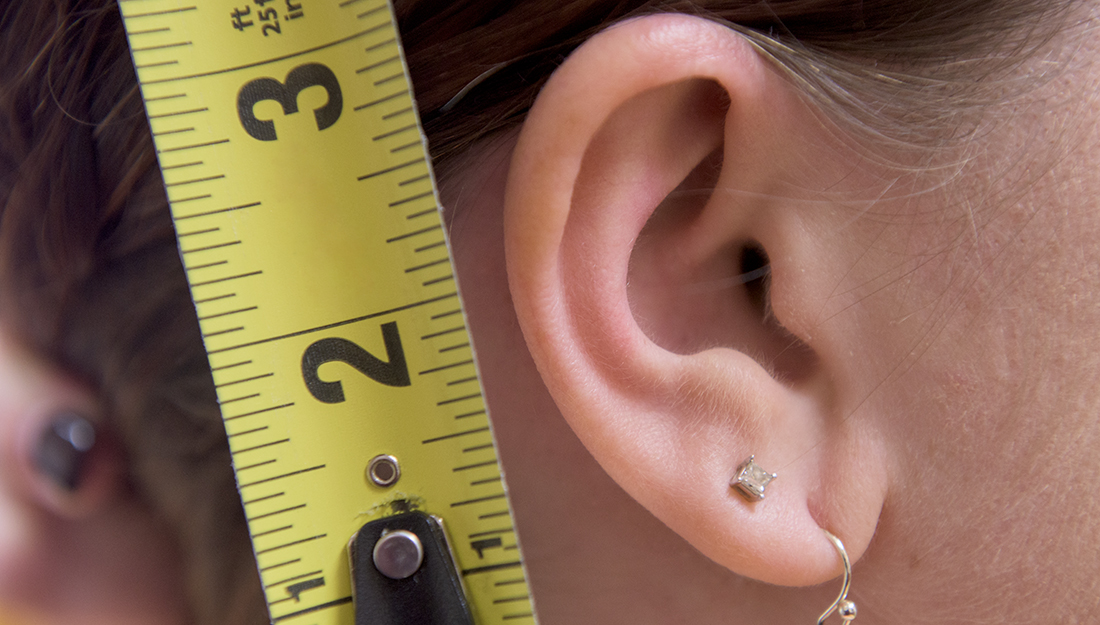- Dominic Hernandez
- Healthy Living, Medicine, Show on VR homepage, Trending, You Asked
You asked: What does cartilage do?
We all know about our bone health, but does cartilage health matter?

Calcium and milk: Those are the two ingredients we know help build pearly white teeth and big strong bones, but where does our cartilage come in? Is our cartilage just in our joints, or can it be found in other places too? Not many people think about how important cartilage is, but Rajesh C. Miranda, PhD, professor at the Texas A&M College of Medicine, gives us a view of cartilage and its relation to your health.
What is cartilage?
Cartilage is what we call connective tissue, one of the supportive tissues in our bodies, and there are three different types found in the body: articular, elastic and fibrocartilage.
Articular cartilage is found at the end of the bones in your joints, which makes it easier to move. Healthy articular cartilage allows our joints to change positions without any grinding or friction—try bending your knee or elbow or rolling your shoulder, and then thank your cartilage.
Elastic cartilage is more flexible and gives your ears and nose some shape (try folding your ears and notice how easy they are to move). This cartilage is also found in your epiglottis, which is the flap attached to the base of the tongue that prevents food and liquids from entering your windpipe as you eat and drink.
Lastly, there’s fibrocartilage, which has a high density of particularly strong, fibrous collagen (sometimes science is easy like that). This cartilage is stronger than other types of cartilage and helps absorb shock movements in important parts of your body like your spine. This allows you to jump up and down without damaging any of your vertebrae.
“Fibrocartilage is in between our disks in our spine, and it helps our vertebrae sit on each other properly,” Miranda said. “It also helps with our flexibility in our back, and that’s why we are able to move and bend instead of being stiff.”
Your cartilage and bones
Your cartilage works quite differently than your bones do, but they are both vital to your skeletal system. “When your bones are developing, they often form on a pre-existing cartilage model. That cartilage holds the shape of parts of your body like your limbs, until it’s taken by bone,” Miranda said. “The major growth in the bones is done by the time you reach puberty and the cartilage is used up.”
In fact, the growth rate race between your cartilage and bones can help determine how tall you may be.
“What we’ve ended up seeing is that when cartilage grows faster than bone, the person will be taller, and if bone grows faster than cartilage, then person will not be as tall,” Miranda said.
Once your bones and cartilage hit their threshold, they don’t continue growing as you age. However, if you’ve ever noticed that an elderly adult’s nose or ears—or both—seem larger than their high school days, it’s because of gravity and the fact that collagen and elastin fibers that make up cartilage break down over time. So actually, the nose and ears do get longer, but it’s not because they’re actually growing, just stretching.
In fact, there is an elongation-to-age ratio of about .22 millimeters per year that forensic scientists use to determine the approximate age of a person.
Your skeletal system and your health
Your bones are a living tissue that responds to stress, such as compression and tension. However, your bones do a great job of keeping themselves renewed and healthy over time.
“You change your skeleton about every 10 years,” Miranda said. “After 10 years, your cells reproduce, and the tissue replaces itself.”
Many people may forget that their bone health can be improved, and things that are good for the bone is also good for the cartilage.
“Weight training exercises can strengthen muscles around joints, improve bone health and prevent the cartilage from getting damaged,” Miranda said. “Also, maintaining a healthy weight can improve joint health by keeping added stress off the joint.”
There are also conditions that can affect cartilage health, and because articular cartilage doesn’t renew, and every stress or damage that is put on the cartilage is permanent.
“The damage can cause the bones to rub and increase friction and causes knobs to grow on the bone and cause osteoarthritis,” Miranda said. “Because cartilage doesn’t renew or have any blood supply, it’s very thin and sensitive.”
When cartilage begins getting damaged, there will be joint pain, swelling, stiffness and/or joint locking or giving way. Self-care measures (rest, ice, protect and elevate) are the first treatments for minor joint injuries, but surgical treatment can be an option for more severe cases.
Some surgical treatments include encouraging growth of new cartilage by drilling holes in nearby bone or by replacing the joint with an artificial one, such as a hip or knee replacement.
Miranda recommended a simple recipe of a healthy diet and moderate exercise to keep your cartilage and bone health in tip top shape. Doing small things such as parking further away and taking the stairs instead of the elevator can go a long way.
Rome wasn’t built in a day, and neither were your big strong bones—or your cartilage.
Media contact: media@tamu.edu


